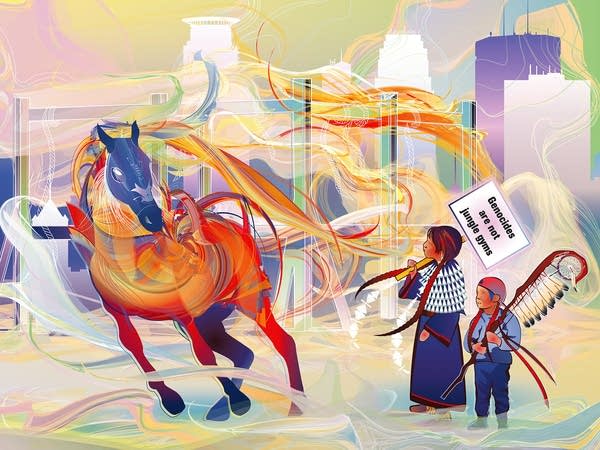Exhibition asks, who's the 'we' in 'We the people'?

Marlena Myles created "Dakota 38 + 2 Prayer Horse" in response to recent demonstrations by Native American communities against the Walker Art Center's decision to include "Scaffold" in its newly renovated sculpture garden
Courtesy of the Minnesota Museum of American Art
Go Deeper.
Create an account or log in to save stories.
Like this?
Thanks for liking this story! We have added it to a list of your favorite stories.


